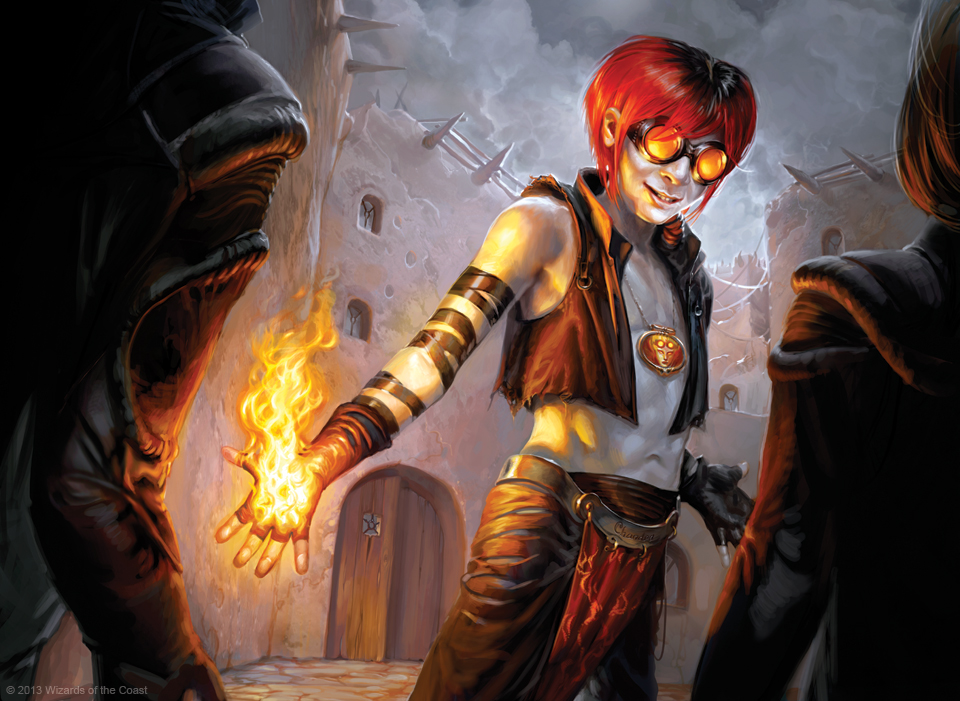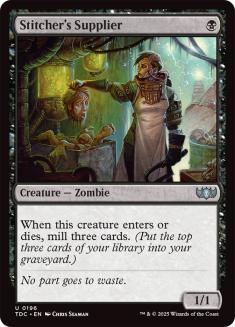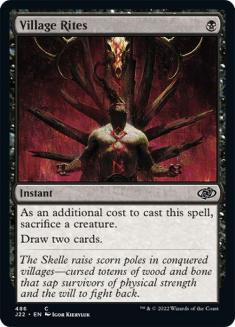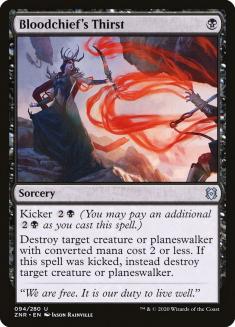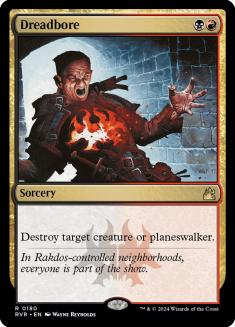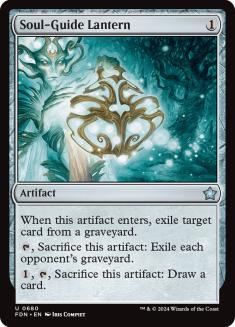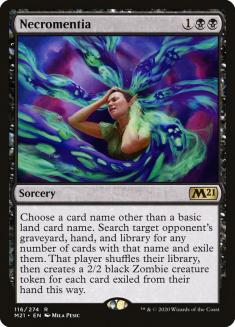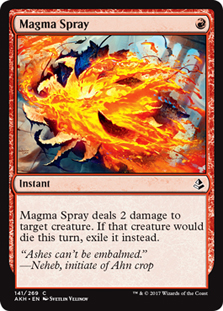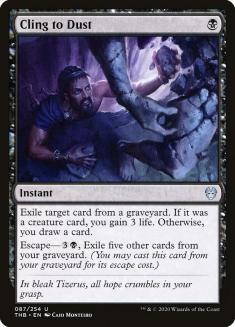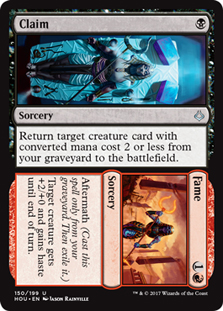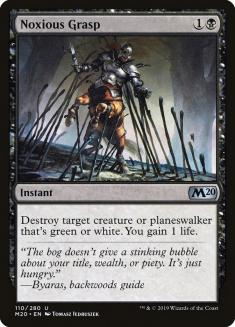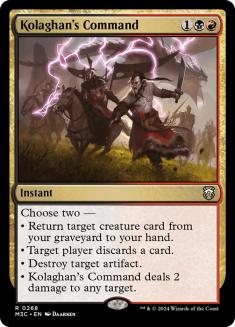With the recent bannings and large tournaments in Standard and Historic over the last few weeks, its easy to forget about one of my favorite formats: Pioneer! With a push toward digital Magic in the wake of the pandemic, there have been waves of players jumping on the Magic Arena bandwagon, but I implore you to try Magic Online if only so you can try out some of the cool older formats that Magic has to offer.
There are a wide variety of tournament options for Pioneer but all of them are currently held on Magic Online. This weekend, on Halloween, there’s a Super PTQ that qualifies you for the Zendikar Rising Split Championship! My goal is not only to inform you by giving you my current list that I’ll be playing, but also going over my sideboard plans for many of Pioneer’s top matchups. I’ll also be streaming the deck over the next few days on Magic Online to prepare for the event in question, so make sure to check it out.
And away we go!
Creatures (15)
Lands (22)
Spells (23)
- 4 Thoughtseize
- 2 Dreadbore
- 2 Kolaghan's Command
- 4 Fatal Push
- 3 Claim
- 1 Cling to Dust
- 4 Village Rites
- 2 Bloodchief's Thirst
- 1 Agadeem's Awakening
Sideboard

First and foremost, why Rakdos Pyromancer with Lurrus? For starters, the draw of the deck is the versatile and proactive nature of the strategy. Your goal, like many grindy decks before it, is to reduce yourself and your opponent down to no cards in hand, hoping to beat them with either Lurrus of the Dream-Den or Kroxa, Titan of Death’s Hunger. Both cards work naturally in your strategy and provide you a payoff for trading one-for-one throughout the entirety of the game.
Like Jund in Modern, all your cards are often trading down in resources because your average draw is significantly better than your opponent’s when you’re able to strip them down and disrupt their synergy. Of course, cards like Uro, Titan of Nature’s Wrath punch a hole in that plan, but luckily it isn’t seeing as much play these days. While it’s still very good, there are so many playable and powerful archetypes that don’t want to or need to play it. Because of that, your strategy of “win from the graveyard” is viable. When Uro is running rampant, I don’t think this deck is worth investing too much time into.
Recent sets have produced a lot of new tools for this style of deck to thrive. We saw something similar in Modern a while back in the format of Mardu Pyromancer, a deck that utilized cheap removal like Lightning Bolt to remove creatures while providing Young Pyromancer with plenty of cheap instants and sorceries. Back then, the go-to graveyard-winning card was Lingering Souls (we even splashed white for it!). Do you think Mardu Pyromancer would still play Lingering Souls if Kroxa, Titan of Death’s Hunger was an option?
These two additions to the archetype give you card selection and card advantage in the long run. A single Stitcher’s Supplier can occasionally be a better topdeck by itself than a Kroxa because it helps fuel the Elder Giant while digging three cards deep for it. Its body can provide you with some early defense against the larger monsters like Lovestruck Beast, but more often than not you just want to find Village Rites to get an extra trigger from Stitcher’s Supplier and provide a valuable target for Dreadhorde Arcanist down the line.
Village Rites is, quite frankly, an integral part of the deck. Every time I try to trim a Stitcher’s Supplier or Village Rites, I ultimately regret it because you have less to do. Most of your game actions result in trading a card so a high raw number of game actions usually means trading resources over and over. Basically, the more cards you play the closer you should get to both players being on empty. At that point, you should have enough lands, cards in graveyard, or Lurrus in the companion zone to fetch in order to turn the corner. The games where you lose are the ones where you start to fall behind because your opponent put pressure on you in a way that dodged your removal. That usually happens when you draw too many expensive cards or too many threats.
In the days of Mardu Pyromancer, one of the strengths of the archetype was a plethora of cheap removal. At the time, Lightning Bolt and Path to Exile were the best options at your disposal, but now we get some serious upgrades. A lot of people, including me, are under the impression that Fatal Push is the best removal spell of all time. Lightning Bolt might be #1 on most occasions, but it’s pretty electrifying that Fatal Push is even in the conversation. In Pioneer, it is hands down the best removal spell in the format.
The density of cheap, efficient, and diverse removal gives you some breathing room against opponents with a wide range of threats. Bloodchief’s Thirst acting as an extra Fatal Push but also giving you backdoor answers to big planeswalker threats is really nice in a deck featuring Dreadhorde Arcanist. Dreadbore, on the other hand, is a bit more clumsy than the rest, but is solid enough to get the job done. While it’s more of a hammer than a scalpel, it’s worth including in many builds and is useful/good against a variety of opponents and matchups.
The deck has been around a little while now, so I won’t bore you by going over all the threats and explaining why they’re good. Thoughtseize might be the best piece of disruption ever printed. It’s good. We get it. So let’s fast-forward to the good stuff.
Sideboarding
VS Oops All Spells
Creatures (36)
Spells (44)
- 4 Thoughtseize
- 4 Eldritch Evolution
- 2 Collective Brutality
- 1 Driven
- 4 Creeping Chill
- 2 Neoform
- 3 Pelakka Predation
- 4 Bala Ged Recovery
- 1 Emeria's Call
- 4 Sea Gate Restoration
- 4 Hagra Mauling
- 4 Turntimber Symbiosis
- 4 Agadeem's Awakening
- 3 Vastwood Fortification
Sideboard

We’re starting with somewhat of a doozy, but just know that this deck is a serious contender in the Pioneer format. While you don’t necessarily die right away when your opponent empties their entire deck into the graveyard, just know that you’re battling from twelve points behind and a ton of creatures coming back from the graveyard. While a single sideboard card can shut this archetye down quite easily, it’s pretty terrifying in the first game.
Oops All Spells is a combo deck that plays Thoughtseize. That’s actually fine for you, for the most part, considering your goal is to strip both players of all their resources. Your Thoughtseize might be game-breaking, taking their one combo piece or even their one land. Their Thoughtseize will likely hit a brick like Fatal Push or the like.
There’s also the outside chance that their combo doesn’t happen quickly enough to threaten your life total before Young Pyromancer builds up enough tokens to just win the game through their attackers. I’ve played plenty of games against Dredge in Legacy where my single Young Pyromancer was able to hold off their crew of Ichorid and Zombie tokens. While it isn’t quite the same here, the concept is similar. Their combo isn’t infinite and can actually be battled back against given enough time and resources.
Incidentally, this style of deck preys on Rakdos Pyromancer so I’d recommend loading up on sideboard options to fight this particular matchup. While you do have some tools that can steal the game, don’t kid trick yourself into thinking you’re favored.
Out:
In:
Soul-Guide Lantern and Necromentia are clear knockouts here, taking pieces of their deck and removing them from the equation entirely. Combined with your normal disruption package and cutting your mostly dead removal, you should be able to keep up with what they’re doing so long as they don’t do it too quickly.
VS Mono-Black Aggro
Creatures (27)
- 4 Bloodsoaked Champion
- 4 Scrapheap Scrounger
- 4 Dread Wanderer
- 3 Spawn of Mayhem
- 4 Knight of the Ebon Legion
- 4 Rankle, Master of Pranks
- 4 Murderous Rider
Lands (24)
Spells (9)

Against Mono-Black Aggro, your entire goal is to buy time. Using your cheap removal, find a space to resolve one of your cheap threats so you can start gaining some much-needed traction while killing their threats. You’re gonna need it, because their threats just don’t stop coming. Scrapheap Scrounger and company are resilient, which is one of the reasons our sideboard has so much in store for them.
Their twelve graveyard creatures are rather difficult to deal with on occasion, but they falter in the face of a steady string of Elemental tokens. Young Pyromancer is your best threat and it’s not super-difficult to stick and get going due to the resilient nature of the archetype. Claim is particularly good in conjunction with Young Pyromancer because you can get it back for cheap, unlocking enough mana to cast one or two spells while their shields are down.
Don’t expect them to hold up mana very often because their entire deck is designed to use all of its mana every single turn. That means a turn where you can play Young Pyromancer and some interaction is going to be very good against most everything they throw at you.
Out:
In:
Your sideboard of Magma Spray and Soul-Guide Lantern should help contain their sticky threats, keeping their aggression under control. Expect them to go a little bigger with Aethersphere Harvester, though that shouldn’t be a huge issue thanks to Kolaghan’s Command.
You’re the control deck here, and control decks rarely want Thoughtseize against an aggro deck. For the most part, the person trying to play a longer game wants access to Thoughtseize, so cutting yours makes a lot of sense. Plus, you don’t have the life total to burn in this matchup. Use your spells to pad your life total so you don’t get snuck up on by a hasty threat later down the line. Kill everything and let Kroxa sort ’em.
VS Azorius Spirits
Creatures (34)
- 4 Rattlechains
- 4 Spell Queller
- 3 Selfless Spirit
- 4 Mausoleum Wanderer
- 3 Nebelgast Herald
- 4 Supreme Phantom
- 4 Empyrean Eagle
- 4 Spectral Sailor
- 4 Watcher of the Spheres
Lands (22)
Spells (4)
Sideboard

Lofty Denial effectively gave the deck access to Mana Leak, which makes the prospect of playing Collected Company a bit less appetizing, but guess what? That’s very good news for Rakdos Pyromancer. Collected Company, and cards like it that generate more than one creature at a time, are particularly good against someone playing an attrition battle. Lofty Denial, while good against combo and slower control opponents, isn’t very good against your strategy.
Again, you’re the control deck here. You need to kill a bunch of creatures, but that can be done without much hassle. Azorius Spirits doesn’t have much in the way of removal, so even a simple Dreadhorde Arcanist can be backbreaking.
Out:
In:
Because Azorius Spirits doesn’t actually kill your creatures, Claim has very little value outside of milling something with Stitcher’s Supplier or bringing back a Kroxa to make them discard exactly one card. When your opponent doesn’t interact with you in any way, cards like Claim are mediocre. In matchups where removal is dead and Claim is mediocre, we choose to keep Claim because it allows for some weird sequences but potentially game-winning sequences. Here, our removal is stellar, so Claim’s gotta go.
As you can see, we don’t have many heavy hitters for this matchup. The only thing you can really do is kill their stuff and close the game as quickly as possible. Don’t let Spell Queller put you behind or else it will bury you.
VS Five-Color Niv-Mizzet
Creatures (13)
- 4 Sylvan Caryatid
- 1 Nicol Bolas, the Ravager
- 1 Tolsimir, Friend to Wolves
- 3 Niv-Mizzet Reborn
- 3 Uro, Titan of Nature's Wrath
- 1 Omnath, Locus of Creation
Planeswalkers (6)
Lands (28)
Spells (13)

I often think of Five-Color Niv-Mizzet as “The King of Midrange.” If you’re trying to beat Niv-Mizzet Reborn in a fair or slow way, things probably won’t end up going all too well for you. I had a lot of trouble beating Five-Color Niv-Mizzet when I played any midrange deck because it just isn’t possible to compete with a five-mana Dragon that draws four spells. It’s just one of those things where their deck fundamentally shoves your deck’s face into the mud. That isn’t to imply that winning is impossible; it’s just not an ideal matchup.
Out:
In:
This situation calls for a Hail Mary. Use Necromentia to try to snipe their best card in a given situation. It will almost always be Niv-Mizzet Reborn, but the occasional Bring to Light or Uro, Titan of Nature’s Wrath can also be a hit. Duress is just another piece of disruption that can snag a Bring to Light or planeswalker in a pinch, buying you some time before their heavy-hitting card draw spells come online.
Both Niv-Mizzet Reborn and Uro are obnoxious, but stripping the opponent of their protection or utility spells and riding those for a few turns could be enough to turn the tide in your favor. On occasion, an early Young Pyromancer and a Thoughtseize or two might be enough to steal some games.
While not ridiculous, Noxious Grasp has some value as one of the few ways you actually have to kill a resolved 6/6. Both Niv-Mizzet Reborn and Uro are huge and can close the game quickly. Noxious Grasp answers both while checking a few different planeswalkers at their disposal too.
VS Lotus Field Combo
Creatures (14)
Lands (22)
Spells (24)

The banning of Underworld Breach did little to sway the combo players from farming with Lotus Field Combo in Pioneer. The deck was good before Underworld Breach and continues to be a force in Pioneer still. As the Thoughtseize deck battling it out against combo, the onus of interaction is on you. If you don’t draw Thoughtseize and a clock, you’re probably in trouble. If you do draw Thoughtseize and a clock, it might not be good enough. Lotus Field Combo is truly a degenerate combo deck that can easily and regularly fight through disruption.
Your sideboard gameplan is much better against them, as once again you get to take out your removal spells for meaningful counterplays.
Out:
In:
The swapping of discard effects for removal and vice versa is a dance as old as Magic itself. As the resource-stripping deck, taking out mediocre or even dead cards for live ones will make all the difference. Losing the first game because one of your card types is dead happens on occasion, but it is much more likely on average that your removal spells are good rather than bad.
Dreadhorde Arcanist can do some heavy lifting here, rebuying a discard spell almost every turn until the game ends. It shines in matchups where Duress comes in because you get that extra boost of discard to pair with it, nearly ensuring that an attack with it will yield an extra piece of disruption.
Their big draw spells can bail them out of sticky situations, so don’t dawdle. If you take advantage early enough in the game, try to close it out as quickly as possible. A single Dig Through Time or Pore Over the Pages can go a long way, and you don’t have many options in the way of disrupting their mana because Lotus Field has hexproof and Alpine Moon is wet garbage.
VS Gruul Aggro
Creatures (33)
- 4 Llanowar Elves
- 4 Burning-Tree Emissary
- 4 Elvish Mystic
- 4 Goblin Rabblemaster
- 2 Reckless Bushwhacker
- 2 Glorybringer
- 4 Legion Warboss
- 2 Questing Beast
- 4 Bonecrusher Giant
- 3 Gallia of the Endless Dance
Lands (21)
Spells (6)

I wrote about Gruul Aggro in Pioneer with the release of Zendikar Rising as the addition of Cragcrown Pathway and its ilk opened up a lot of avenues for any deck featuring Llanowar Elves and a second color. Gruul popped into my head at first glance because the dream in Pioneer has always been Llanowar Elves into Goblin Rabblemaster into Embercleave. What else is there in life?
Your matchup here shouldn’t be too bad, but anything can happen. They are aggressive, so stumbling or keeping a mediocre hand just isn’t an option. They will roll you when they’re on the play and you don’t have a one-mana piece of interaction, and on occasion they’ll put you six feet under even when you do have the answer. Their deck is just good.
Having a few extra copies of Fatal Push really comes in handy here, as their best draws feature a mana creature sticking around in the early turns. Having that cheap piece of interaction can buy you infinite time, allowing for your curve to come together to continuously apply disruption to their gameplan. It’s a tight squeeze as you start to constrict all their avenues of getting back into the game.
Out:
In:
Sometimes it’s important to keep Thoughtseize in your deck against an aggro opponent. This is not one of those times. While cards like Embercleave are potentially game-ending, it’s important to understand your role and execute it to the best of your abilities. If you get caught out trying to cast discard, removal, and creatures, it becomes a lot harder to ensure you draw the right cards at the right time. Everyone knows how bad drawing Thoughtseize is against an aggro deck when their hand is empty. Your life total is under direct attack from a lot of small creatures, which means every point has value.
Noxious Grasp isn’t exactly a killer but it’s good enough and has value in a few other matchups. I like it here because specifically Questing Beast is annoying, but the extra life point actually comes in handy pretty regularly. Some versions play Domri, Anarch of Bolas. Some versions go harder on the green creatures and play Lovestruck Beast. While Noxious Grasp doesn’t answer Goblin Rabblemaster or Glorybringer, I do think it has more value than the discard spells or Cling to Dust. It’s also a clean one-for-one against Scavenging Ooze, one of their better sideboard options.
Prepping for the PTQ
While Pioneer has a (reasonably) defined metagame, it’s safe to say that there are a ton of different archetypes to choose from. Because of that, it becomes nearly impossible to build a definitive sideboard guide. This point hits home even harder when you realize that one or two cards different in an opponent’s deck can invalidate your sideboard strategy if you aren’t careful, so you need to be able to understand why you’re sideboarding instead of just how to sideboard in a given matchup.
Whatever deck you choose to bring to battle this weekend, I hope you have some fun. Pioneer is about as open as it has ever been, which means there is a lot of room to brew and breathe. The top decks aren’t exactly forgiving, and some of them can close more quickly than you can get off the ground, but the tools are there.
Pioneer is a powerful format with a lot of diversity among the “most powerful cards.” As a result, you get a lot of different decks built around various hard-carries that are customizable and offer a variety of gameplay experiences. It’s refreshing.
Magic is actually in a pretty good place right now. I’ve taken some time off the last few weeks because I got Ban Burnout, but I’m going to start grinding the Standard ladder and various other tournaments over the next few months as I try to make my way back onto the Pro Tour, or whatever you want to call it these days.
If that sounds like something you’re interested in watching, come hang out!

